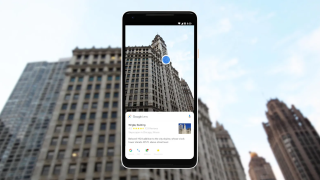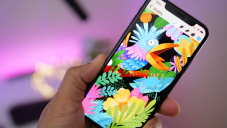18 Things About Your Smartphone Camera That Impact On Image Quality
Dhir Acharya - Sep 18, 2019

Photography capabilities are among the key selling points for a smartphone with many people wondering how good its cameras are.
- How to get a Bangladesh virtual phone number?
- Looking For The Best Non Chinese Smartphone? Check Out This List
- Xiaomi Mi 10i: Made In India, Snapdragon 750G Chip, 5G, 120Hz Display, 4,820mAh Battery, And 108MP Camera
Photography capabilities are among the key selling points for a smartphone with many people wondering how good its cameras are. You may have a phone already but when you want to get a new smartphone in the future and want the best camera, these are the things you should look for.

1. Bright aperture
Premium phones from big names like Apple and Samsung have a wider lens aperture than cheaper ones, hence higher-quality photos. For instance, the Galaxy S9 Plus from Samsung has an aperture of f/1.5, which means it can take shots with a blurred background, especially when the subject is close to the camera. In fact, this phone has one of the best cameras among smartphones.
2. Decent amount of megapixels
Typically, the best cameras for smartphones feature from 12 to 21 megapixels, which is great but you may also want to consider the micron/μm pixel figure because it may also mean improved image quality. As of February, for example, the best-selling Samsung phones have 1.4 μm pixels. This is pretty large, allowing sensors to take in more light hence better shots.
3. Large screen
Smartphones don’t have a traditional viewfinder, so you have to hold your device with two hands and use the display to find the view and release the shutter. Therefore, the larger the screen is, the more you can see. In addition, if your phone screen is made from Gloria Glass, it’s good news because the screen will resist scratches better. Also, a phone screen with higher resolution will give you a clearer picture, you can check its specifications for this. In the case of iPhones, which houses Retina design, images will be even better.
Moreover, phone makers are competing to release smartphones with the smallest bezel possible, as well as chin-less and notch-less designs. This is hard to do, but some brands are getting close.

4. Optical image stabilization
This is a built-in feature to help minimize the impact of shake on photos. Without this feature, whenever you make a movement, the camera will pick it up and spoil the photo. The feature can help improve video quality too.
5. RAW
When you shoot in RAW, you can treat each of your shots exactly the way you want instead of letting the camera decide. With RAW files, you can also better control how the end picture will look. It’s easy to change the exposure, adjust the white balance on your computer while you can’t do these easily on JPEG files.
However, RAW files are far larger so they consume a lot of storage space on the phone.
6. Lenses and Zoom
Premium smartphones have excellent lenses which can sometimes have better apertures than those of small digital cameras. In addition, designers want phones to be compact so they usually use a wide-angle prime lens or several prime lenses to overcome the lack of optical zoom. But many phones still use digital zoom, which is bad.
Another option is clip-on lenses and many manufacturers make these, including the famous maker ZEISS.

7. HDR
High Dynamic Range has been existing in photography for long and cameraphone makers are bringing it to smartphones. It helps take shots featuring a better dynamic range (between shadows and highlights), improving image quality on phones.
This is especially helpful when you capture landscapes, as well as portraits in heavily backlit scenes and sunlight. However, don’t use this feature where people move through the shot because HDR means your phone captures multiple shots and combines them, so all the movements will appear in the end image.
8. ISO control
When you are taking photos in a place with not enough light, you need to raise the ISO levels to capture more light. But keep in mind that this may cause the picture to include more noise. Though smartphones mostly have a noise reduction feature, that can ruin the pictures as much as noise.
9. Camera control options
Camera features are important and tend to increase in number each time a new phone rolls out. Most mid-range and premium smartphones have a pro/manual mode. With this mode, you have control over the white balance, ISO, you can shoot in RAW or use exposure compensation, depending on what brand you’re using.
Also, new premium phones from brands like Samsung and Apple also offer a portrait mode (selective focus) to blur the background of the photo, which gives the bokeh impression as with digital cameras when you use wider apertures.
Both modes feature different filters as well as options for taking panoramas, timelapse, slo-mo, square cropped video and images.

10. Video
Newer phones let you capture videos in 4K resolution for higher-quality clips. The latest devices offer 4K resolution at 60 frames per second for smoother videos, while others offer 30 fps. You should also check if stabilization is used during video capturing because this significantly improves the footage quality; meanwhile, using continuous AF when you’re recording helps you take better videos too.
More affordable smartphones tend to offer 720p or 1080p at most. Keep in mind that 4K videos will consume much more room in your phone’s memory, so you need a device with large storage or get an external memory card.
11. High-speed or Slo-mo video
To generate a slo-mo video, which the phone can playback in slow-motion, the camera captures a video at a high frame rate. Some current smartphones offer even up to 960 frames per second.
But you need to find out how long your phone camera can record for, what resolution it offers because higher frame rate means lower video resolution, hence lower video quality.
12. Focus and shutter response
It’s useful to know how fast your camera can focus and the shutter response is, but you may have to read reviews. Knowing the frame rate is also useful since higher rates can help you take better photos in case your subject is moving.
In terms of autofocus, besides pressing the display to focus, some smartphones offer modes like face-priority and smile detection.

13. Flash
Most phones feature a built-in LED flash but you don’t need to pay much attention to it because they can get harsh when the subject is close and is no use when the subject is far away. In fact, it’s best to turn it off since your phone’s camera tends to use “auto flash” by default, firing when you don’t want.
Some phones have a dual-tone LED flash to improve lighting and if you take selfies a lot, you should consider getting a phone with a front-facing LED flash.
And these features, which are useful but not essential
14. Battery life
People often think that this is one of the most important factors, but as most phones have lousy battery life, it’s not considerable anymore. If you want to make sure the phone lasts all day despite all the heavy tasks you do, get a portable battery charger.
15. Water resistance
If your phone has this, it’s a bonus, helping you take shots in the rain or underwater. Of course, they cannot dive too deep for too long, but they can meet the regular need for regular use.
16. Photography apps
There are thousands of apps out there for you to choose, regardless of Android or iOS. The Play Store may have a bit more apps than the App Store since creating Android apps and making them available is easier.
Such apps allow you to edit photos, turn someone into a GIF, but some of the more useful apps like Snapseed and Adobe Photoshop Fix are extremely good.

17. Expandable memory
Your smartphone may have huge internal memory but it’s always nice to know if you can insert a memory card for more storage. While many Android devices offer this option, iPhones don’t.
Plus, you should check if you can use any free backup storage on the cloud, which comes really handy in case you lose your handset. It also means that you can store your photos and videos somewhere else and free internal memory.
18. Shutter release button
This one is not common, you can find it on some phones like the Sony Xperia or the Kodak Extra. A physical shutter button could be favored by photographers compared with an on-screen one.
Featured Stories

Features - Dec 18, 2024
6 Cutting-Edge Features of Galaxy AI & Lineup of Supported Samsung Smartphones

Features - Jan 23, 2024
5 Apps Every Creative Artist Should Know About

Features - Jan 22, 2024
Bet365 India Review - Choosing the Right Platform for Online Betting

Features - Aug 15, 2023
Online Casinos as a Business Opportunity in India

Features - Aug 03, 2023
The Impact of Social Media on Online Sports Betting

Features - Jul 10, 2023
5 Most Richest Esports Players of All Time

Features - Jun 07, 2023
Is it safe to use a debit card for online gambling?

Features - May 20, 2023
Everything You Need to Know About the Wisconsin Car Bill of Sale

Features - Apr 27, 2023
How to Take Advantage of Guarantee Cashback in Online Bets

Features - Mar 08, 2023
Comments
Sort by Newest | Popular